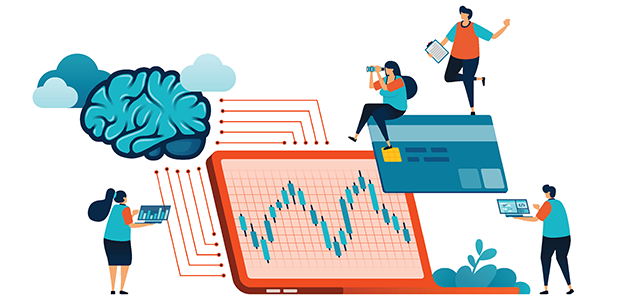
How to harness AI to improve forecasting and reduce labour costs
It has recently been National Payroll Week in the US, a week which celebrates America’s employees and payroll professionals across the country.
Finance teams are the beating heart of any business, taking overall responsibility for the financial health of an organisation. It’s therefore vital that they are constantly innovating strategies to maintain an efficient way of working, in order for a business to continue to grow.
The growing influence of AI technologies is one that should not be ignored amongst finance teams, and can significantly streamline the forecasting process, explains Simon Litt, financial expert at The CFO Club: “Traditional labour forecasting is rather linear, using a percentage growth model that can often lead to a bloated organisation - too many employees in relation to the amount of work that there is.
“The reason this can happen, is because the traditional model relies on retroactive changes to achieve staff and labour efficiencies. It is largely retrospective, rather than being proactive and looking at the future health of the business. It uses yesterday to predict tomorrow, which can only be accurate to a certain extent. For businesses that are in their early stages of growth, this can be incredibly impeding.”
To help businesses to harness AI within their forecasting strategies, Simon shares his top tips below and gives insight into how the technology can help growing organisations to improve their overall financial health:
Adopt a forward-thinking mindset
“It can be difficult to move away from the traditional methods that are ingrained in a lot of finance teams. Afterall, if that’s all you’ve ever known, it can be difficult to know how to improve. But, for growing businesses, it’s vital for finance teams to adopt a forward thinking, proactive approach.
“Don’t be afraid to try out and test new forecasting techniques and tools. There is no one size fits all approach, so taking the time and allowing for trial and error is the best way to go. Pre-built AI tools such as Akkio are great for beginners but more established firms will want to build their own AI models.
“There are multiple ways AI technology can be adopted to improve the forecasting process. First of all, AI-powered predictive analytics consumes all the organisational data you can give it, using insights to dynamically predict future outcomes. It’s like having someone in charge who remembers every single employee, payment and KPI.
“You can also layer on external data to find areas you're lacking and see what market trends you should be preparing for. AI will also contextualise your growth period, enabling you to optimise workforce planning and compensation.
“In the not-so-distant future, it’s likely AI will be able to manage the entire payroll process, using your compensation strategy to inform its decision-making. So, it’s important to start testing it out now.”
Use AI tools to improve strategies, not replace them
“Whilst it’s important to be constantly reviewing your forecasting model, it’s vital that you don’t completely rely on AI technology to do the job for you.
“Nobody knows the typical seasonal patterns of your business better than you when it comes to its financial performance. While AI tools can more often than not flag abnormalities, they don’t know the nuances of your business; you must still review forecasts thoroughly using the human eye in case the AI does not identify these automatically.”
Continue to review the effectiveness of your forecasting
“Continuing to develop and innovate your forecasting process does not stop at testing out a new AI tool. You have to monitor its effectiveness and the results it delivers, then ensure your finance team is all open to using it.
“Trialling different methods at the same time to compare and contrast results could also be an effective way to determine the best forecasting process to suit your business.”

